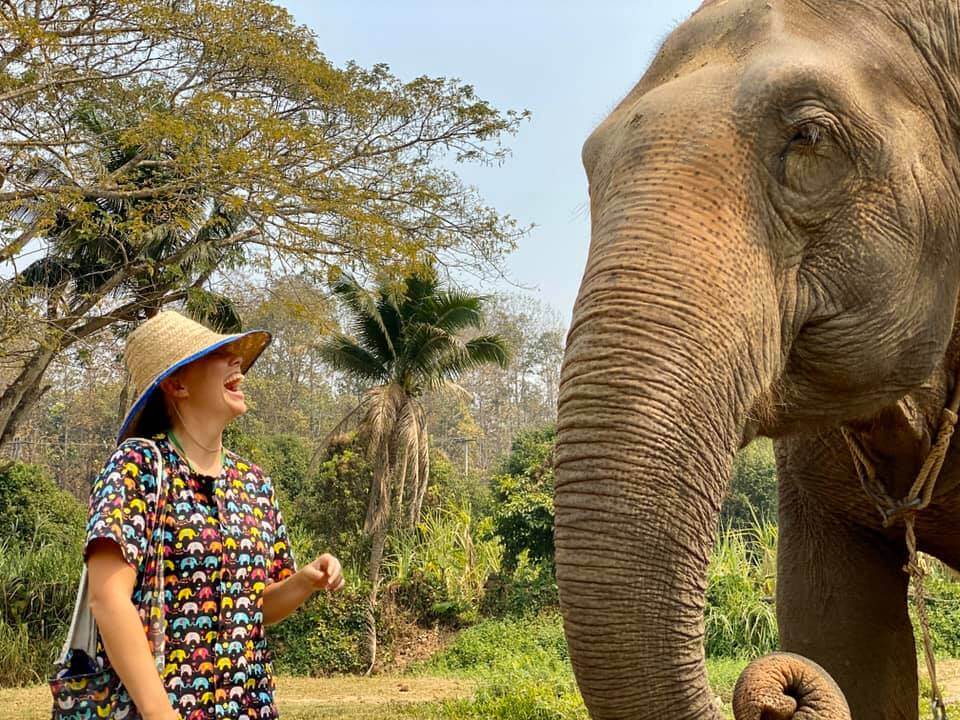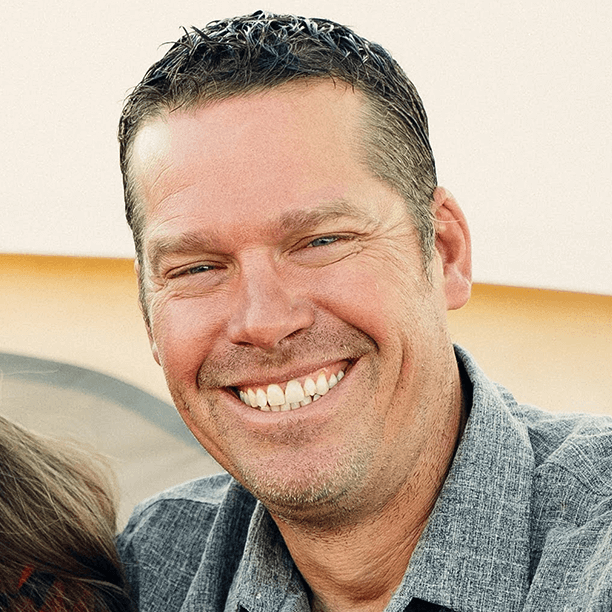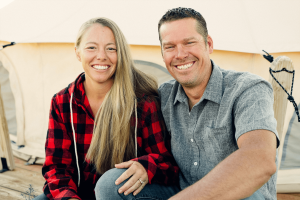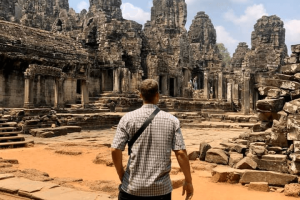Swasdi khrap/kha, or “hello” in Thai!
Thailand is known as the “Land of Smiles.” Also, for beautiful beaches, opulent royal palaces, ancient ruins and fantastic Buddhist temples. Recently having spent time in the remarkable beaches of The Philippines and New Zealand, we stayed in the central and northern part of the Indochina Peninsula, splitting our time between three hubs: Bangkok, Chiang Mai and Chiang Rai.
Bangkok had a blazing fast pace, creative use of shape and color, un-seizing noise, that all too familiar urban stink and a people possessed of calm. We landed here, fought through the crowds, were introduced to Buddhism and its temples and ate copious quantities of delicious food.
Chiang Mai is nestled into Thailand’s northern mountains. Roughly 500 years ago it was the capital of the Lanna Empire; still standing from that era are vestiges of brick wall and a defensive moat cloaking the historic city center. It has a much slower pace to life than its big brother to the south. But it’s anything but dull.
Chiang Rai was the smallest of the three cities. Located deep in the mountains, bordering Myanmar and Laos, it is home to a diverse mix of Thai and Hill-tribe peoples; Hill-tribe people are largely Thai, but the blood of many other nations have been infused over the years creating a slightly different and more diverse brand of Thai people. They are hardworking, down to earth and tend to house the friendliest people we’ve met in Asia so far.
Regardless of where you travel in Thailand, you will encounter Theravada Buddhism. It is extremely prevalent. Wikipedia suggests 94.6 percent of the population practice it. All males over the age of 20 are expected to have been a monk for a period; it’s a rite of passage that renders training, karma and merit towards their journey to enlightenment; in the now and the next reincarnation. Some take the monk journey more seriously than others. Some monks commit their entire lives to the practice at the tender age of seven. Watching sunset over the mountains from a rooftop restaurant in Chiang Mai, Keshia and I talked to the bartender about his monk experience. When asked how long he was a monk, he spit out an embarrassed chuckle followed by, “tree days.” Perhaps his journey to enlightenment will take a few more reincarnations? There are a staggering 40,717 Buddhist temples in Thailand, of which 33,902 of them are active. It appears that every block of every city has one or two; there are times they stack up side by side. They call them “Wat,” which means “City of Temples.” They are places to train, educate, meditate, show your respect to Buddha and pursue enlightenment. For us the temples were places of celebrated art and architecture. They made our minds race with inspiration and reflective thoughts. They are truly phenomenal. To fully appreciate the craftsmanship and ornate detail dressing the tapering spires and vaulted ceilings you need to see them in person. Some temples are historic relics fighting oxidation and decay, while others are shiny and new. Most temples have perpetually resting cats immune to heavy crowds; it is said the cats are the “guardians” of the temples.
While not exploring the temples we ate. Actually, we ate A LOT! At home, Thai food is one of our favorites. Here, there are more specialized ingredients available, making the food more authentic and menu items more diverse. Everywhere we look we find unique and bold flavors suspended in a delicate balance. Most meals start in markets brimming with fruit, vegetables, meat and spice. One day we took a private cooking class. It began in one of Bangkok’s oldest markets, which was an enriching introduction to the world of Thai cooking. “Holy basil is used with crispy pork or duck, sweet basil we will use with our green curry and this lemon basil is for our Tom Kha soup.” There were moments the air was gloriously filled with lemongrass; other times the air stunk of gutted fish; still others your sinuses would burn with the heat of fresh peppers. Having a guide and interpreter made that market visit even more exciting! That day we made green curry paste in mortar and pestle, chicken green curry, tom kha soup, pad Thai and sticky rice with mango. There was one morning Keshia mistakenly ordered chicken liver curry. Oops. Where, oh where, are our furry friends from El Nido when you need them? Keshia couldn’t eat it. I wholeheartedly hate liver. But I proceeded to eat her mistake to save face. Keshia laughed and called me her dog. How’s that for love? We ate at two Michelin Star restaurants in Bangkok as well: Jai Fai’s and Pandango. Can’t afford to do that back home! Most of our meals were from street vendors though. They maintain a special place in our hearts, remaining fast, inexpensive, flavorful and at times a little mysterious and scary. Throughout our time in Thailand, we gluttonously shoved our faces with enough Thai food to ascent to the revered state of “swollen vacation bellies.” But you know who has a larger belly than these two gluttonous tourists? You guessed the answer correctly if you internally screamed, “Elephants!” And we spent a day hanging out with them to prove it.
Kanta Elephant Sanctuary takes old and retired elephants largely from the logging and tourism industries near Chiang Mai and cares for them on their 150-acre plot. The elephant’s enormous appetites are funded through donations from visitors like us. In exchange we get to feed, bathe and hangout with the gentle giants. We all had to wear matching uniforms identifying ourselves as food providers. Like buying a dog’s love and affection with treats, we bought our thick skinned friends affections with sugarcane, elephant grass and bananas. We have always held wildlife and the environment in the highest regard but hanging out with these magnificent beasts somehow elevated our regard that day. It was simply brilliant!
We took a trekking tour into Hill-tribe country outside Chiang Rai, visiting Akha, Lahu and Chinese Villages. Our guide, Kwan, was outstanding. He grew up in a small northern farming village. His knowledge was profound, especially with regard to flora, fauna and local history; he was funny, energetic, happy. He was the perfect guide! The trek wasn’t on a trail, rather meandering through farms, villages and bamboo-banana forests. We hiked through fallow rice terraces, ulong tea plantations, rubber tree groves, pineapple fields and under the shade of lychee trees. He’d grab his machete to chop fresh lemongrass and citronella, pry galangal root from the ground, he even made us goofy hats and selfie sticks of tropical vegetation. Lunch was served and consisted of steamed food in two separate bamboo sleeves over an open fire. One sleeve contained chicken, lemongrass and garlic; the other had egg, tomato and onion. On the side, propped on a makeshift spit above the flame was sticky rice wrapped in banana leaves. Everything was locally sourced, biodegradable and completely of the jungle. It felt a little dishonest throwing our chopsticks and banana plates into the forest, but Kwon reassured us, “back to nature.” While we were walking through a rubber tree grove just outside the Akha Village, Kwan stopped and informed us most Hill-tribes have large families, usually around eight children. “But after they start rubber tree, now two only!” He proceeded to laugh wholeheartedly at his joke as the rest of the group slowly caught on. Going through a Chinese Hill-tribe Village, he told us about how they eat dog. He explained when you eat dog, other dogs can smell it and will bark at you until the smell wears off roughly one year later. Reinforcement: never eat dog! Seeing the distress on our faces, Kwan stopped to show us two basils: purple and hot. He went on to explain that dog tastes bad. Purple basil isn’t strong enough to mask the taste of dog, so you need to use the hot one. And the punchline: “Just like America, we have hot dog same same.” We all burst out in a chorus of heartfelt gut laughs. Well timed joke, Kwan! On that trek we also stopped for a swim at a waterfall, sipped fresh tea on a tea plantation and ended the day with a soak in a natural hot spring! If you’re ever in Chiang Rai, book a day trekking with Kwan of Bamboo Tours.
Keshia and I have historically made an effort and taken the time to learn basic words and phrases required for simple communication when traveling. This trip has been different with so many countries in so little time. We were simply unprepared. Fortunately for us, most Thai people we encountered stumble through some Thaiglish, or Thai English. Most Thai’s make English interesting; they tend to omit pronouns, don’t observe past and present tense, interchange words (for example, “any” and “every”), pronounce “l” as “n” (“loose ball” becomes “noose ban.”). Some of our favorite Thaiglish encounters are:
Checkbin = Can we get the bill please.
Why why = White wine
Are you spicy = Is your food spicy
Same same = Similar or the same
One of our most memorable evenings was hanging out at a restaurant watching the late sunset along the Chao Phraya River directly across from Wat Arun, in Bangkok. As the colors in the setting sky transitioned from orange to black, Wat Arun became more radiant, filling the Bangkok skyline with its beacon of light. It was indeed romantic and capped a wonderful Valentines Day!
The Sunday Night Market and Walking Street in Chiang Mai was unexpected. It exploded with energy, art and color. We checked into our hotel just before sunset, the starting time for the once-a-week event and happily began strolling the miles of vendors. I thought often of mom; if she could have shopped the booths filled with local silks, hand woven clothes, utilities made of mango wood and arts and crafts of every imaginable type, her Christmas shopping would have been done ten months ahead of schedule, possibly for years. But most of all, she would have contributed another radiant smile to a land known for brilliant smiles like hers!
Thailand has been a magical journey. Can’t say we found Buddhist enlightenment, but we certainly are enlightened!
Up next: Episode 4, Vietnam.







